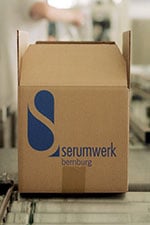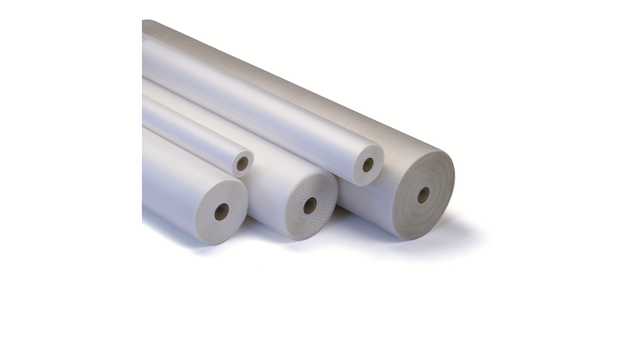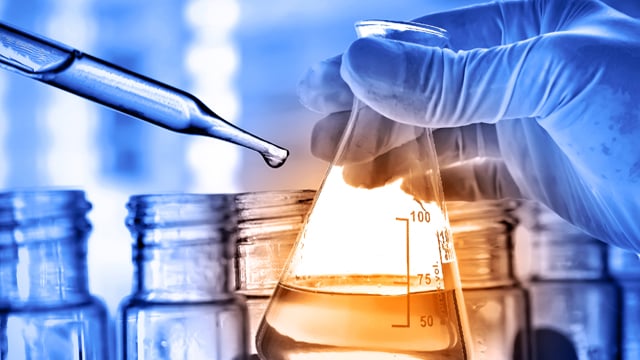Keeping up blood levels
Germany-based Serumwerk Bernburg uses sophisticated ultrafiltration methods to produce artificial plasma, used to stabilize patients in critical situations.
DATE 2024-04-09 AUTHOR Hanna Cleaver Bernburg is a town of contrasts. Like many small towns in the former East Germany, it displays a mix of past and present while hinting at the future. Boarded-up windows in run-down buildings are sandwiched between the colorful facades of new construction; state-of-the-art buses cruise by, running on natural gas.
Bernburg is a town of contrasts. Like many small towns in the former East Germany, it displays a mix of past and present while hinting at the future. Boarded-up windows in run-down buildings are sandwiched between the colorful facades of new construction; state-of-the-art buses cruise by, running on natural gas.
Bernburg is home to Serumwerk Bernburg, a modern pharmaceutical firm that sells medical and veterinary products in more than 20 countries. Its products range from salt solutions for washing out kidney dialysis machines to iron-rich formulas to treat anemia in suckling piglets.
Today, Serumwerk is expanding steadily in a relatively new direction for the company, the production of hydroxyethyl starch or HES, one of the worlds most widely used plasma volume-expander products.
Artificial blood
Hydroxyethyl starch is, in essence, artificial blood without the cells. It is widely used in medicine to replace plasma, typically required after an accident or an operation involving a large loss of blood or when dealing with burn and septicemia patients or patients in clinical shock.
Usually found in the emergency room or surgical suites at a hospital, plasma volume expanders stabilize a body in shock by maintaining blood volume.
Plasma volume expander products are important in cases where full blood of the right type or amount is not immediately available. Products such as hydroxyethyl starch are used as a short-term measure to restore blood volume, water and crucial salts while a patient’s condition is stabilized.
Serumwerk’s success has been made possible by the remarkable turnaround that has taken place in the former East Germany since reunification.
Serumwerk was built in 1954 by the East German government on the site of a former chocolate factory. It manufactured veterinary medical products for the increasingly industrialized East German agriculture, eventually becoming the largest such factory in the country.
Good practice standards
After the collapse of the Berlin Wall in 1990, Serumwerk management organized a buy-out with private investment from outside the industry, and in 1992 the company was successfully privatized. To adhere to European Good Manufacturing Practice regulations, the company decided to replace or update all its equipment, made in the former East Germany, while continuing production. This project cost about 27 million German marks.
Before 1992, Serumwerk had been manufacturing dextran, a different type of plasma volume expander developed in the 1940s. “At first, when we took over in 1992, we were oriented to producing dextran, but we soon realized that we had to go for hydroxyethyl starch — a product that was gaining favour worldwide,” says Werner Zimmermann, head of technology at Serumwerk. Zimmermann has worked at the company since qualifying as a chemist in 1963.
We started our own production of hydroxyethyl starch, but it was very difficult and inefficient, so we took on the most modern membrane filtration technology. Since then it has been something of a success story.”
This technology — which involves high-tech microfilters — is crucial in the manufacture of pure hydroxyethyl starch because it allows the removal of by-products and ensures that only molecules of a specific size are produced.
Hygiene is paramount
Hydroxyethyl starch is made by dissolving starch (Serumwerk uses potato starch — see box) in sterile water, subjecting it to hydroxyethylation and putting it through an ultrafiltration process.
Because the starch is a perfect source of nourishment for bacteria, hygiene is paramount and cleaning of the production equipment has to be undertaken “aggressively,” Zimmermann says. This puts added stress on equipment, particularly on the separation technology.
In 1997 Serumwerk installed membranes from DSS, today Alfa Laval Nakskov, which allowed the production of specific kinds of hydroxyethyl starch. Zimmermann and his team experimented with various degrees of pressure, temperature and acidity, among other factors, to make the process as efficient as possible.
By 2002 the demand for hydroxyethyl starch was so high that Serumwerk approached Alfa Laval for more membrane filters. The new filters doubled the company’s production capacity. Now further expansion is planned. “We want to achieve another doubling of capacity next year,” says Zimmermann. “Hydroxyethyl starch production is really important for our firm and for our growth in the future. We export to Latin America and India, and we still have German markets at the heart of our business. But we want to move into Asia and Eastern Europe.”
Hydroxyethyl based on starch
Alfa Laval membrane technology has been crucial to the development and expansion of Serumwerk Bernburg, to a large extent based on its production of the plasma volume expander, hydroxyethyl starch.
The basic ingredients include starch from potatoes, which Serumwerk buys in powdered form. Serumwerk uses local potatoes that are not genetically modified, a preference of both customers and management.
Potato starch is considered to be more consistent than cornstarch (used by other manufacturers) in providing a narrow range of molecule sizes, which results in less waste and a higher-quality product.
Because hydroxyethyl starch is used in medicine, the company has to be completely sure that this and other filtered products it makes match exactly what has been ordered — and are sterile.
“Ultrafiltration at high temperatures is how we stop the growth of germs, which is a hugely important criterion for our choice of membrane,” says Werner Zimmermann, head of technology at Serumwerk. “Cellulose filters, for example, cannot function at continuously high temperatures.”
Suits batch production
The company uses plate-and frame modules that can tolerate temperatures of up to 75 degrees Celsius and a very high pH, crucial to withstanding the cleaning process. The extra-ordinarily thorough cleaning process, essential in medical Serumwerk currently uses three modules, each containing 280 membranes and each equal to a 42- square-meter membrane area. They are designed so that the permeate can be visually monitored as it comes out of the modules. This allows any problem in separation to be spotted quickly and even linked to a specific membrane, making repair or replacement easier.
Zimmermann comments that the modular nature of the Alfa Laval membranes suits the batch method of production used at Serumwerk — enabling the company to react quickly to new orders for particular kinds of HES or other products.


